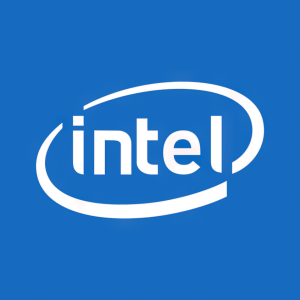Intel Editorial: Leveraging Technology to Provide Global Pandemic Relief
Intel has successfully launched its Pandemic Response Technology Initiative (PRTI) with a commitment of $50 million, focusing on healthcare, education, and economic recovery amid COVID-19. Over the past year, the PRTI has managed 230 projects across 170 organizations, showcasing a global impact. Intel is now transitioning to the Intel RISE Technology Initiative (IRTI) with an additional $20 million dedicated to furthering projects addressing social equity, human rights, and climate action. These initiatives are designed to enhance technological collaboration for both immediate and future crises.
- Completion of 230 projects in healthcare, education, and economic recovery under the PRTI.
- Transitioning to a new $20 million Intel RISE Technology Initiative to continue impactful projects.
- Collaboration with various organizations to leverage technological resources effectively.
- None.
Insights
Analyzing...
The following is an opinion editorial by Rick Echevarria of Intel Corporation.

Rick Echevarria is vice president in the Sales, Marketing and Communications Group and general manager of the Intel Olympic Program at Intel Corporation. He leads Intel’s Pandemic Response Technology Initiative. (Credit: Intel Corporation)
One year ago, Intel launched the Pandemic Response Technology Initiative (PRTI), a
Twelve months later, the scope of PRTI work includes 230 projects spread across 170 organizations. We’ve partnered with organizations around the world to apply our solutions and expertise to geographically unique problems as well as global challenges, and we don’t want to stop.
Aligned with Intel’s RISE 2030 goals, we are transitioning this process and the technical expertise of our employee volunteers to the Intel RISE Technology Initiative (IRTI). The IRTI will continue to review and fund projects related to healthcare, education and the economy with new dedicated workstreams for social equity and human rights, accessibility, and climate action.
IRTI will create a broader, purpose-driven platform for action with a new
Diagnose, Treat and Prevent the Next Pandemic
The challenges of the healthcare industry are innumerable. When assessing projects, how do you choose between helping patients, assisting medical staff, funding life-saving research or making sense of massive amounts of unstructured patient data? We wanted to ensure we were tapping into the full breadth of Intel’s portfolio to provide support and make a lasting difference. The PRTI worked with partners across the healthcare space, from universities and hospitals to equipment manufacturers and infrastructure partners, to maximize our impact at every level.
Diagnose: In early 2020, there was a huge shortage of polymerase chain reaction tests, which are critical to the analysis and identification of infectious agents. Intel partners in the medical imaging space stepped up to use CT and X-ray scanning machines to help diagnose and triage patients with COVID-19. Using artificial intelligence (AI), these machines were able to determine the presence and severity of COVID-19 and facilitate a treatment plan when tests weren’t readily available. This paved the way for organizations to create diverse datasets for more accurate diagnoses. UC San Francisco leveraged Intel® SGX to deploy a confidential computing platform that will help protect both the algorithms and privacy of healthcare data when building AI models.
Treat: Telehealth solutions enabled access to medical care while minimizing the risk for patients and clinicians. Intel worked with Banner Health and VeeMed to augment in-room displays with Intel® NUC Mini PCs running telehealth software. Providers and specialists were able to consult on COVID-19 cases, and medical staff could remotely speak to patients, log data from in-room monitors and even zoom in to check a patient’s vitals.
Prevent: Our projects targeted patient and provider needs along with work in research and therapeutic development. This included partnering with our customers to provide high performance compute (HPC) resources for COVID-19 research as well as research projects that go beyond the current pandemic. The Berlin Institute of Health leveraged Intel®-based HPC architecture to successfully perform compute-intensive RNA sequencing on a single-cell level to better understand how the novel coronavirus works.
Connect, Engage and Evolve Education
The immediate needs in the education space during the pandemic were very clear: Children needed devices and connectivity to stay in school. As we worked to provide devices to students, we learned that focusing on connectivity alone would be a “maintenance-only” solution. We wanted students to actually advance. We partnered with schools, ecosystem partners, local governments, teachers and device manufacturers to make a difference through a solutions-led approach.
Connect: The PRTI engaged in many opportunities to distribute laptops and bolster connectivity in communities around the world. With the Intel® Online Learning Initiative, we were able to serve a million students globally. In the U.S., we focused in the areas of most need, we provided a remote learning solution to students in over 15,000 families representing 45 school districts that serve Title 1 students in the U.S.
Among the students awarded were cadets from the Airforce JROTC program at Aberdeen High School in Mississippi, which offers a gateway to Advanced Placement Computer Science education.
For Aberdeen High School in Mississippi, we provided a remote learning solution to students in over 15,000 families representing 45 school districts that serve Title 1 students in the U.S. Among the students awarded were cadets from the Airforce JROTC program, which offers a gateway to Advanced Placement Computer Science education.
Engage: Through our work with the LA Unified School District, we learned that
Evolve: One of our most exciting education projects focused on the crucial emotional support teachers provide. District Zero is a Chicago-based company that focuses on wellness-based learning. Using natural-language processing and sentiment analysis, District Zero’s emotional learning tool gives teachers actionable insights and solutions to help students who may be struggling. With Intel’s support, the company will deploy its system for all students in the Indian Prairie School District that serves 30,000 students from areas outside just outside of Chicago.
Protect, Adapt and Enable the Economy
Throughout the year, we looked at multiple factors contributing to the economic downturn. The common theme was safety, whether it’s developing solutions that make it safe for businesses to open, minimizing the risk to patrons or investing in solutions that help deliver a more resilient economy when the next global health crisis occurs.
Protect: Citywide quarantines and stay-at-home orders are a last resort designed to stop the spread of contagious disease, but even with these protective measures in place, businesses need to be able to open safely to serve essential needs. The PRTI invested in several projects designed to make buildings safer during the pandemic, including AI-enabled occupancy and social distancing controls with Johnson Controls. The solution trades human observation monitoring of social distancing for environmental data and sensors to optimize air quality and physical distancing analysis.
Adapt: Helping businesses adapt to facilitate essential activities is key to economic recovery. While movement and travel were greatly limited by the pandemic, they cannot be eliminated completely. GE Digital Aviation Software developed a new predictive maintenance application for cabin air quality to help airline carriers proactively monitor the health of air quality systems on their flights.
Enable: Investing in solutions offers a degree of resilience against the future spread of disease and pandemics. With funding from Intel, Purdue University is developing autonomous robots that can detect pathogens and disinfect within seconds. Two functional robots already exist and are being tested in Purdue COVID-19 quarantine rooms and classrooms. Six patents later, the college is moving toward commercialization opportunities. The hope is that this work will help make public spaces safer and minimize exposure risk in high-traffic “hot zone” areas for pathogens.
A New Path for Positive Impact with the IRTI
Key to the success of the PRTI projects are the scores of Intel experts working with partners to understand the heart of the issues and provide tailored solutions that yield real results. You can see a map of our global impact with the PRTI here. Watch for this map to grow as we continue this work through the IRTI. The work has already started with the IRTI, and we’re looking forward to sharing more throughout the year. Visit the website for more information.
Rick Echevarria is vice president in the Sales, Marketing and Communications Group and general manager of the Intel Olympic Program at Intel Corporation. He leads Intel’s Pandemic Response Technology Initiative.
About Intel
Intel (Nasdaq: INTC) is an industry leader, creating world-changing technology that enables global progress and enriches lives. Inspired by Moore’s Law, we continuously work to advance the design and manufacturing of semiconductors to help address our customers’ greatest challenges. By embedding intelligence in the cloud, network, edge and every kind of computing device, we unleash the potential of data to transform business and society for the better. To learn more about Intel’s innovations, go to newsroom.intel.com and intel.com.
© Intel Corporation. Intel, the Intel logo and other Intel marks are trademarks of Intel Corporation or its subsidiaries. Other names and brands may be claimed as the property of others.
View source version on businesswire.com: https://www.businesswire.com/news/home/20210407005249/en/







